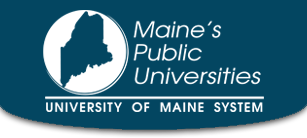Across Maine’s public universities, more than 2,900 faculty, professional staff, and student workers are fully or partially funded through federal sources, and many of us regularly interface with federal employees and services.
With a federal shutdown now underway, the University of Maine System is regularly communicating directly with our employees and students. Additionally, we are providing relevant updates about the shutdown and resources on this webpage, including from federal agencies, Cornerstone Government Affairs (which provides federal government relations services for our entire System and is based in Washington, D.C.), and various professional associations of which our universities/employees are members.
All UMS employees — including those supported by federal dollars — should continue reporting to work unless you have heard otherwise from your supervisor. System and university leaders are continuing to carefully analyze agency contingency plans and potential impacts to UMS employees and activities by federal funding source and will communicate any necessary changes to supervisors. If your work or schedule is affected, your supervisor will notify you directly.
We encourage you to visit this page frequently for the most current information about the federal shutdown’s impact on our operations and to reach out to your supervisor or appropriate System or university administrators if you have questions that have not yet been adequately addressed.
Latest Updates
- U.S. Office of Management and Budget (OMB) Current Federal Agency Operating Status
- Federal Agency Contingency Plans (Will be linked here as they become available)
- Army Corps of Engineers
- Federal Energy Regulatory Commission
- National Aeronautics and Space Administration
- National Science Foundation
- U.S. Environmental Protection Agency
- U.S. Department of Education
- U.S. Department of Health and Human Services
- U.S. Department of Homeland Security
- U.S. Department of Housing and Urban Development (PDF)
- U.S. Department of Justice
- U.S. Department of Labor
- U.S. Department of State
- U.S. Department of Transportation
- U.S. Department of the Treasury
- U.S. Department of Veterans Affairs
- U.S. Department of War (Defense)
- U.S. Food and Drug Administration
- U.S. Department of Agriculture
- U.S. Department of Commerce
- American Council on Education Webpage: Government Shutdowns and Higher Education
- Research America: Primer on CRs and Shutdowns
- COGR: Considerations for a Federal Government Shutdown
- APLU Federal Government Shutdown Resources
- In the event of a stop-work order from a federal agency, please immediately notify your university’s office of sponsored programs and University of Maine Director of the Office of Research Administration Chris Boynton (christopher.boynton@maine.edu).
- UMaine Vice President of Strategic Partnerships, Innovation, Resources, and Engagement Jake Ward (jsward@maine.edu) and UMaine Senior Advisor to the President and Director of Research Development Jason Charland (jason.charland@maine.edu) are available to work with Maine’s Congressional Delegation and our DC-based federal relations firm, Cornerstone, to seek answers to time-sensitive inquiries.
- If you receive a media inquiry related to federal impacts, please immediately forward it to UMS Chief External & Governmental Affairs Officer Sam Warren (samantha.warren@maine.edu), who will respond on behalf of the university in coordination with relevant stakeholders.
